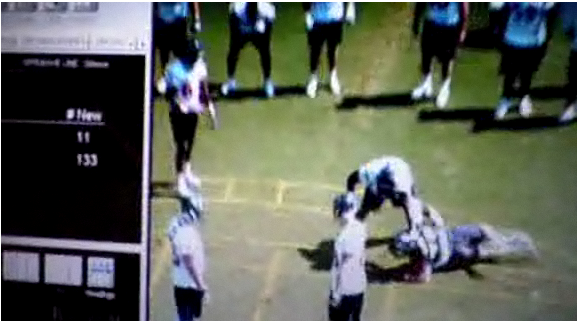Who Does the NFLPA Represent?
Posted February 24th, 2009 by RetiredPlayersESPN’s Outside the Lines recently ran a story about the Houston Texans violating the NFL’s collective bargaining agreement by conducting “contact” drills during the offseason. The piece focuses on three Houston Texans offensive linemen who all suffered season ending injuries on May 9, 2008,while participating in a banned pass rush drill during offseason workouts. The league’s labor agreement says players are prohibited from wearing pads during offseason drills. The agreement also states that there will be no “contact work” such as pass rushing drills.
ARTICLE XXXVI Section 4. Contact: There will be no contact work (e.g., “live” blocking, tackling, pass rushing, bump-and-run)
or use of pads (helmets permitted) at minicamps.
ESPN reported that NFLPA player representative Kris Brown and NFLPA Executive Committee member Mark Bruener confronted Texans head coach Gary Kubiak to inform him that pass rushing drills are prohibited during the offseason. According to Texans offensive lineman Dan Stevenson, Kubiak told the union reps that the coaches would run practice as they wanted and the drill continued to take place. Bruener and Brown have declined interview requests regarding this matter.
Texans offensive lineman Dan Stevenson suffered what could be a career ending shoulder injury while participating in the prohibited full contact drill. Stevenson filed a grievance against the Texans for the alleged violation of the CBA.
The NFL Management Council rejected the grievance because the “Texans deny […] players were required to participate in drills which are explicitly prohibited.”
Stevenson brought a video camera into the Texans meeting room and made his own video of the prohibited drill.
“They can no longer deny the fact that this drill ever happened,” Stevenson told ESPN.
The Texans medical staff initially diagnosed Stevenson’s injury as a shoulder strain. When Stevenson obtained the medical opinion of an independent physician he was diagnosed with multiple tears in his right shoulder. Even though Stevenson paid $10,000 in dues to the NFLPA in 2008 he felt the need to hire his own attorney outside of the union legal department to represent him in his claim against the Texans.
Five year NFL veteran, Jordan Black, also suffered a season ending injury that day. One month after the injury ocurred the Texans released Black from their roster. The Texans stated that Black did not suffer an injury during the workout and that the team would not pay for his shoulder surgery. In September, the Texans agreed to reimburse Black for his medical expenses but also stated the reimbursement “does not constitute evidence nor any admission of the Club’s liability.”
The third player to suffer a season ending injury that day, Chukky Okobi, a seven year NFL veteran, was released by the Texans in June of 2008 and has not signed with another team.
ESPN’s Outside The Lines attempted to interview the Texans head coach, general manager, and general counsel but they refused to take part in the interviews.
Who does the NFLPA represent? The union has made it clear that they do not represent retired players. The fact that the NFLPA does not enforce the CBA for active players who pay $10,000 annually in dues is inexcusable. Why even have a union if the rights of its members are not going to be defended? Why have a collective bargaining agreement if its terms are not going to be enforced?
Article II Section 2 of the CBA states, “The NFLPA and the Management Council will use their best efforts to faithfully carry out the terms and conditions of this Agreement and to see that the terms and conditions of
this Agreement are carried out in full by players and Clubs.”
Teams have conducted these prohibited drills for years. The prohibition of pass rushing in the offseason is meant to protect the players. When players suffer injuries the medical expenses are paid out of the players’ share of NFL revenues. This is money that could be used for player salaries or retiree benefits. The owners are not held responsible for any of the medical expenses.
The average NFL career is a short 3.5 years. How many players will be willing to endure a season long strike or lockout when it costs them nearly one-third of their earning capacity as a professional athlete? The NFLPA should be doing all that it can to lengthen the average NFL career.
The union has not enforced the terms of the CBA for its active player membership. It’s difficult to believe they will fight for the rights of retired players that are incorporated into the labor agreement.
The retirement and disability plan are incorporated into Article XLVII of the CBA, but players are left to hire their own attorneys when their claims for disability benefits are denied.
So, who does the NFLPA represent?

Reggie,
I have kept up with your story and find your determination to overcome this terrible fate one that also shows how great players deal with hardships.I am very fortunate as a retired player to leave the game without any major injuries,so I am blessed.Your bad fate should b a calling to all current players that you all are only one play away from being a retired player.So, you all should join the fight.
May God continue to bless you
1970-76
Earl